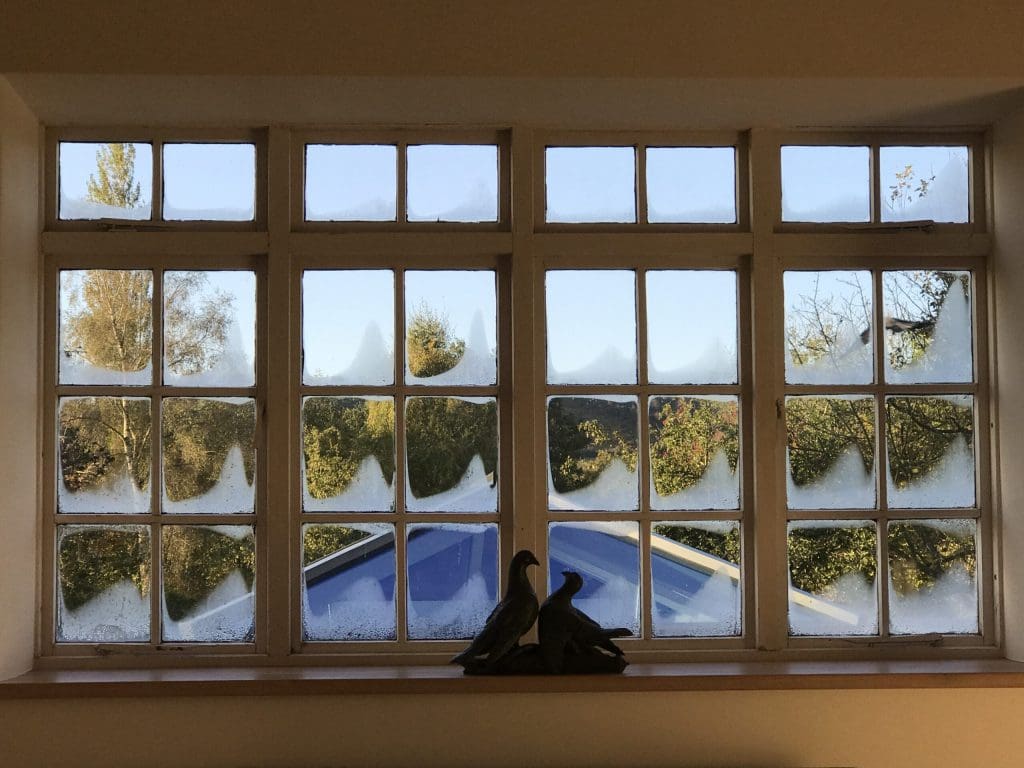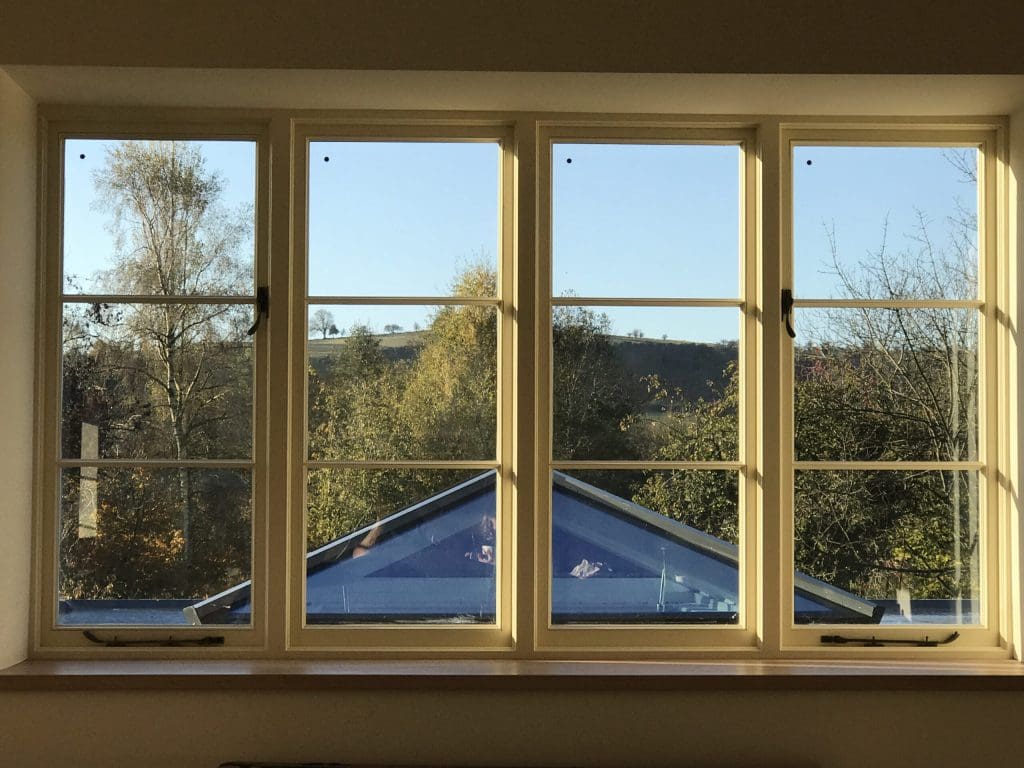
Can you get vacuum glazing condensation?
Condensation is formed when the air temperature surrounding an object falls below the dew point and changes into a liquid […]
Condensation is formed when the air temperature surrounding an object falls below the dew point and changes into a liquid on a solid surface. In this blog, we uncover whether it’s possible to get vacuum glazing condensation.
What is condensation and why is it formed?
Air, at any temperature, can hold a certain amount of water vapour, the warmer the air, the more vapour it can hold. The dew point is the tipping point at which air cannot hold any more moisture. Once the moisture exceeds the dew point, condensation forms on the coolest surface available. It can often be seen on window panes and cold wall surfaces such as tiles.
There are three places where condensation can occur on glass units. Each forms for a slightly different reason and requires a different response:
1. Internal vacuum glazing condensation (inside the room)
Within a building, air collects moisture from a variety of sources. For example, a single adult will produce around two litres of water vapour every day. Certain rooms, kitchens and bathrooms for example, have a higher risk of condensation on internal surfaces so controlling the level of internal moisture is very important within a household.
Condensation within your home is not just a “quirk” of the house, it can be a significant health issue if left unchecked. The formation of water pooling at the base of cool items, together with the warm air, can introduce mould and fungus into the home. As stated on the NHS website:
…if you have damp and mould in your home you’re more likely to have respiratory problems, respiratory infections, allergies or asthma. Damp and mould can also affect the immune system.
https://www.nhs.uk/common-health-questions/lifestyle/can-damp-and-mould-affect-my-health/#:~:text=Yes{672140fc81bbf8538617114bced9858b6a0cbab1d6ed15da368cdf22ee20eca7}2C{672140fc81bbf8538617114bced9858b6a0cbab1d6ed15da368cdf22ee20eca7}20if{672140fc81bbf8538617114bced9858b6a0cbab1d6ed15da368cdf22ee20eca7}20you{672140fc81bbf8538617114bced9858b6a0cbab1d6ed15da368cdf22ee20eca7}20have{672140fc81bbf8538617114bced9858b6a0cbab1d6ed15da368cdf22ee20eca7}20damp,also{672140fc81bbf8538617114bced9858b6a0cbab1d6ed15da368cdf22ee20eca7}20affect{672140fc81bbf8538617114bced9858b6a0cbab1d6ed15da368cdf22ee20eca7}20the{672140fc81bbf8538617114bced9858b6a0cbab1d6ed15da368cdf22ee20eca7}20immune{672140fc81bbf8538617114bced9858b6a0cbab1d6ed15da368cdf22ee20eca7}20system.
Vacuum glazing can be very effective are reducing condensation on window frames, as shown in the before and after images below.


However, vacuum glazing doesn’t remove the issue, it is likely to have just changed the coldest point in the room and caused condensation to form elsewhere. Vacuum glazing needs to be paired with effective ventilation to achieve a healthy air quality.
2. External vacuum glazing condensation (outside of building)
Improvements in the performance of glass units mean it’s possible for condensation to occur on the outer pane of glass. This occurs when humidity levels are high and the climate conditions are cool. The outer pane of glass does not receive heat from the inside of the building. This demonstrates that the unit is thermally efficient and heat loss through the glass is very limited. This is the most common form of vacuum glazing condensation.
Condensation on the outer face of the glass occurs a little differently in vacuum insulated glass. This is due to the micro pillars and the perimeter being less insulating than the vacuum. In vacuum glazing condensation forms in a waffle pattern, with clear spots around the perimeter and the micro-pillars. See below an image of the waffle effect on a vacuum glazed window.

If this occurs on your glazing, then do not be concerned, it will clear as the weather conditions change.
3. On the inner surfaces between the two panes of glass
Condensation on either surface between the two pieces of glass (the air gap), suggests the cavity sealing has been compromised. The unit has “broken down” and requires replacement. This isn’t a catastrophic problem which requires immediate attention, but it will only get worse visually and the performance of the unit is significantly reduced.
The lifespan and effectiveness of vacuum glazing mean that this type of condensation will be very unusual. It is regularly seen in low quality frames with standard double glazing over 10 years old. It is also a very common occurrence in slim double glazed units with low sightlines, read here for more details.
In summary
Vacuum glazing condensation can occur in a few different forms. The use of vacuum glazing can reduce the most harmful impacts of the internal condensation but may increase the likelihood of exterior condensation due to it’s extreme energy efficiency.